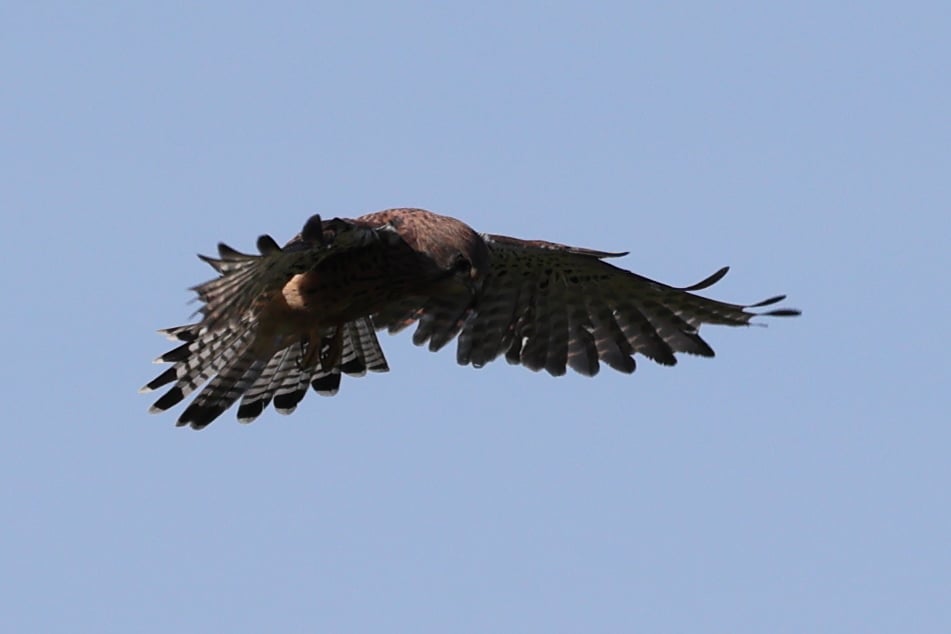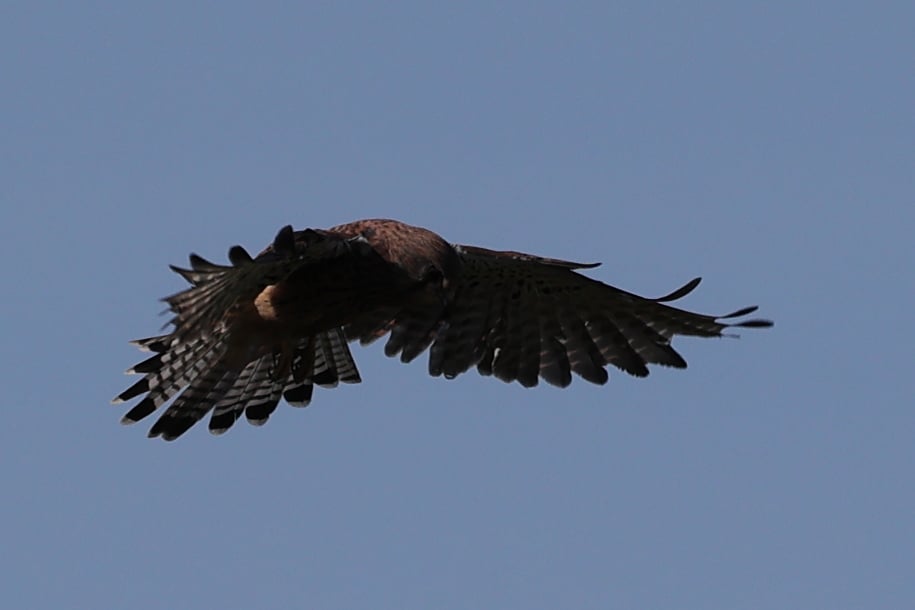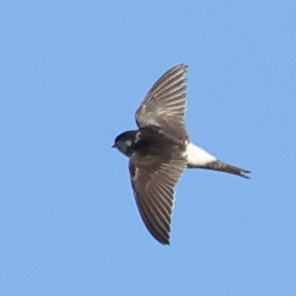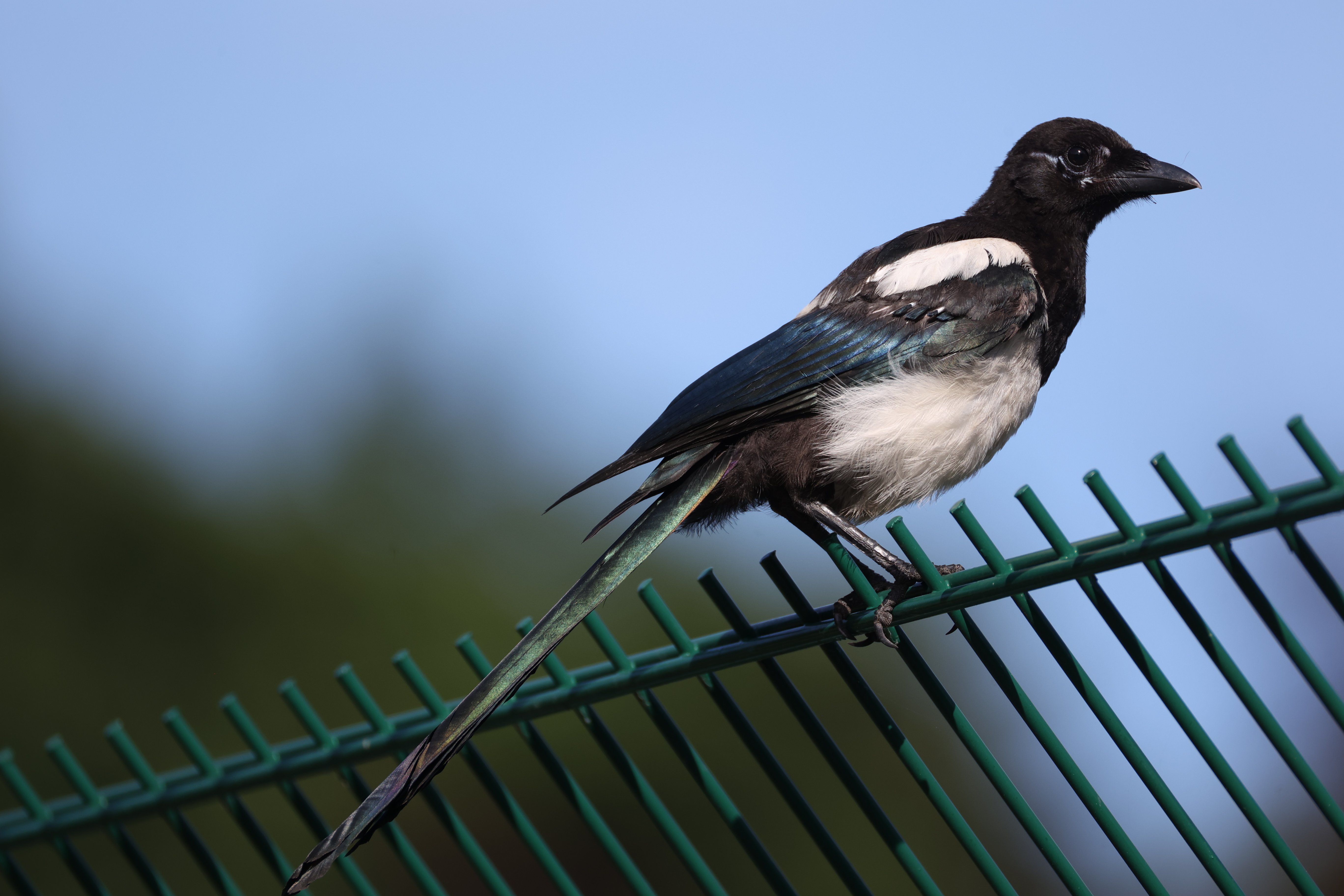And not entirely to my surprise, Windhover is even in the Oxford English Dictionary!
Try this one - still messed with, but gives more of the shadows

Which, just cropped out of the camera's RAW format (suffering from the classic dark bird against white sky issue with auto-ISO) was


An alternative name for a kestrel, and definitely what this one was doing!
Reading, UK, Canon R6 + RF800mm, 1/2000s, F10, ISO1000, Exposure Bias +1 1/3
Must have knocked the dial as that should have been F9. For most of its hover, its head was in the shadow of its wing , making for less than perfect shots needing drastic post processing, e.g.
Since the swallows were back in roughly the same place, and same (decent) light today, I tried with 1/2000s - and got a couple of shots that were clear improvements. E.g.

So, Canon R6 + RF200-800mm lens at full length, F9, ISO 1250, Exposure bias on camera +1 step at the suggested 1/2000s
To give a sense of cropping/distance, that's 296 x 296 pixels from a camera whose full frame is 5472 x 3648
Trying for the photos hand held for twenty minutes or so (with rests) left me with extremely tired arms!
Oh! Thank you.
I'd assumed you were just using it's standard nickname (e.g. Jenny Wren or Robin Redbreast). I wonder whether it is named from it's cousin's English nickname. As an example of that, Robins were once just "Redbreasts", got nicknamed Robin, and somehow, the nickname became the standard way to name them. As you can perhaps tell, this derivation amuses me
This is actually the truly crazy (and heavy!) RF200-800mm, with F9 at 800mm (and they do one even madder at x4 the price or so).
Sadly, Canon don't let others use their RF interfaces, so I'd guess Sigma, etc. don't try hard to work with Canon anymore.
I know for birds the ideal is closer to the suggested 1/2000s, but in practice that seems out of reach without doing bad things to the ISO with this lens/body. While the camera was doing auto-ISO to 100-350, the photos needed quite a bit of increased brightness when processing (RAW of course) to bring out the bird, so there was little to spare. And this, in sunshine. If I'd been thinking, some exposure compensation on the camera would have been sensible, but I doubt the end result would be much better.
Not that I'm aware of - just eats storage and battery! That said, with a heavy camera, you're unlikely to keep it firmly on target for much of the burst!
I think what's happening is the long focal length allowing distant shots is giving a much greater depth of being in focus, combined with decent sunlight, and often trees in the full frame that are the right sort of distance way (these are massively cropped down from the full frames). This gives a better chance of the auto-focus getting it right. Also, swallows do have slower glide phases in their flight which can help to get on target. What I was forgetting is to try burst shooting to up my chances.

Reading, UK - today, which rather surprised me to still see a flock of Swallows around. I find them really hard to photo - they notoriously don't land, and fly fast, so this lot of photos is as good as I get.
Canon R6 + RF 800mm, 1/1250s, ISO 100 or 350 for these

Always a delight to see flitting about, even more of a delight if they stay still long enough to photo. Reading,UK

Well, one symptom of it anyway - sunlight on dew on webs. Reading, UK
Yes, there's both buzzards and kites around here - very similar life-styles.

Red Kite, Prospect Park, Reading, UK Canon R6 + RF 800mm
I like how the colours came out, especially as this was a dark bird on a white sky, which is always needs correction when on auto-ISO.

I'm reasonably sure this is a Chiffchaff, though it might be some other sort of warbler, and I was pleased to get such an action shot. (even if a bit obscured) Reading, UK.

Common Buzzard, high up in a tree in Prospect Park, Reading, UK
Nice shot, but are osprey nests always that rough & ready?
I think it fairly obvious that the first European settlers in North America were far from Ornithologists :)
As you've most likely already seen to find those links, Red-tailed hawks and (what I think of as) a Buzzard share a genus Buteo.

Reading, UK - just feeding my addiction to photoing Buzzards and Kites.
OK, that would be a danger to my wallet!

Just rejoicing in a moderately sharp shadow , and a slightly wistful look - yes, sunlight in Reading, UK!
I'd guess an adult transitioning from breeding plumage.

St Mary's Churchyard, Reading UK
I decided I was being snobbish by ignoring an obvious flock of "wild" birds in easy reach: in my local town centre - though sadly the light today was not that great.
One of my books lists four broad types, all represented here: Chequered, Rock Dove type, Pied and Ginger.
And look well-nigh identical to the UK Magpie - though the Latin name is different.
A young one from yesterday for contrast:

No scolding that I noticed :)

Happily, Prospect Park often gives a good distance view, so I can see them coming, especially if circling - even so, I often lose focus especially when "close" overhead. There's also the curse of shooting dark subjects against bright sky - my camera's auto settings would have this photo as little more than a silhouette, but happily shooting in RAW allowed a decent recovery.

Common Buzzard, Reading, UK Canon R6 + RF800mm

I didn't actually intend to capture this robin in motion from tree trunk to branch, but this lucky accident amuses me.
Reading, UK Canon R6 + RF800mm

Reading, UK Two proud parents and their almost adult goslings: nothing rare or fancy, just liked the group.
Canon R6 + 200mm
Looking back at my old photos from various locations, that "not round pupil" thing in wood pigeons seems more often present than not. I wasn't something I'd looked previously out for.

Or just "Pigeon Post"? Or even "Recreational Route". Anyway, Wood Pigeon, UK, awaiting the best title I can give it.
Really nice to get that angle - I'd guess you were half way up a mountain at the time.

... well, a park fence round a pond, any way.
Mandarin Duck Mother & Chicks. Reading, UK Canon R6 + RF800mm

Saundersfoot, Wales Canon R6+RF800mm lens
The House Martins were in the process of building this nest from harbour mud, though I think they gave up on it over the coming days. Why the sparrow was interested I do not know!


Sometimes it takes everything you've got to get those feathers correct!
Young gull, probably either Black-backed or Herring.
Canon R6 + RF800mm Saundersfoot, Wales
